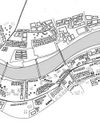Reinhard is Professor for Computational Architecture at Bauhaus-University Weimar and Principal Scientist at the Center for Energy at the Smart and Resilient Cities competence unit at the Austrian Institute of Technology (AIT) in Vienna. In addition, he acts as Co-PI in the Big Data Informed Urban Design group at the Future Cities Lab (FCL) at the Singapore ETH Centre. His current research interests are applicability of multi-criteria optimization techniques for planning synthesis, cognitive design computing and correlations of computed measures of spatial configurations with human cognition and usage of space.

In the past, when architects and planners were faced with issues such a large-scale, affordable housing, or developing new cities, the approach was to look for prototypical solutions that were very industrial in nature. These solutions were usually reproduced several times, in several places, without any customization or consideration for context or other parameters. As a result, the output was not qualitatively great for several reasons.
How you approach a problem is what matter
Every site has certain strengths that architects use to their advantage while designing projects. However, in large-scale affordable housing schemes, for instance, the focus is on providing shelters to a large number of inhabitants, without much attention to the site’s strengths. As a result, the built structures might not make the best use of available light, space, ventilation, etc. Similarly, in the case of city planning, the design might not have taken into consideration issues like traffic decongestion and circulation. Further, these solutions also disregard beauty, as they focus heavily on functionality. We have seen several such failures in the past. While the solution benefited people in the sense that it provided a place to stay, or a city to locate them in, it did not add to their lives qualitatively. They were not socially inclusive, and let to several problems in terms of crime too. Eventually, many of these buildings were demolished, and many cities were deemed dangerous and unlivable.
New-age solution for age-old problems
Diese Geschichte stammt aus der May 2019-Ausgabe von Indian Architect & Builder.
Starten Sie Ihre 7-tägige kostenlose Testversion von Magzter GOLD, um auf Tausende kuratierte Premium-Storys sowie über 8.000 Zeitschriften und Zeitungen zuzugreifen.
Bereits Abonnent ? Anmelden
Diese Geschichte stammt aus der May 2019-Ausgabe von Indian Architect & Builder.
Starten Sie Ihre 7-tägige kostenlose Testversion von Magzter GOLD, um auf Tausende kuratierte Premium-Storys sowie über 8.000 Zeitschriften und Zeitungen zuzugreifen.
Bereits Abonnent? Anmelden

Interlacing Perspectives
‘Meraki-2019’ A visionary Seminar series presented by Dr.Baliram Hiray College of Architecture, Bandra(East), Mumbai.

Facilitating A Community Through Architectural Practice
The humble, self-designed, self-built and organically planned home built by the majority of the world population rarely gets appreciated and critiqued as a viable lesson in architectural design.

The Art Of Solving Problems Creatively
The practice of architecture is perhaps incomplete without the complement of a variety of other arts.

Upcycling towards a playful tomorrow
Play is like the middle child, often forgotten, and always taking a back seat. For young kids, play can simply be running around, armwrestling with friends, building sandcastles on the beach, or singing popular music tracks in the shower.

Balancing The Poetics And Pragmatism Of Everyday Design
Humanity is faced with an oxymoronic crisis. The crisis involves the earth, the environment, impending looms of climate change, deforestation, loss of species, dwindling resources etc.

Just Give Me Some Space: Discussions And Beyond
Just Give Me Some Space (JGMSS) is Suha Riyaz Khopatkar’s debut book that paints a portrait of the dynamic life of an architecture student.

The Next In Vernacular Architecture
Architecture has become a capitalist.

Rethinking The Future: Architecture And Its Education
“I want to be like animals, the bird makes a nest in one or two days, the rat digs a hole in a night, but intelligent humans like us spend 30 years to have a house, that’s wrong.” - Jon Jandai

Uniting The Human-Scale With The City-Scale
London-based architect Usman Haque is famed for his interactive architectural systems, and for his exploration of newer, more effective ways of creating human engagement and interaction through his designs. Indian Architect & Builder caught up with him, to quiz him on a variety of topics such as his journey as an architect, his inspirations and philosophies, architects using the digital revolution to their advantage, and more!

Framing spaces
Almost every architect also doubles as a photographer or at least an enthusiast.